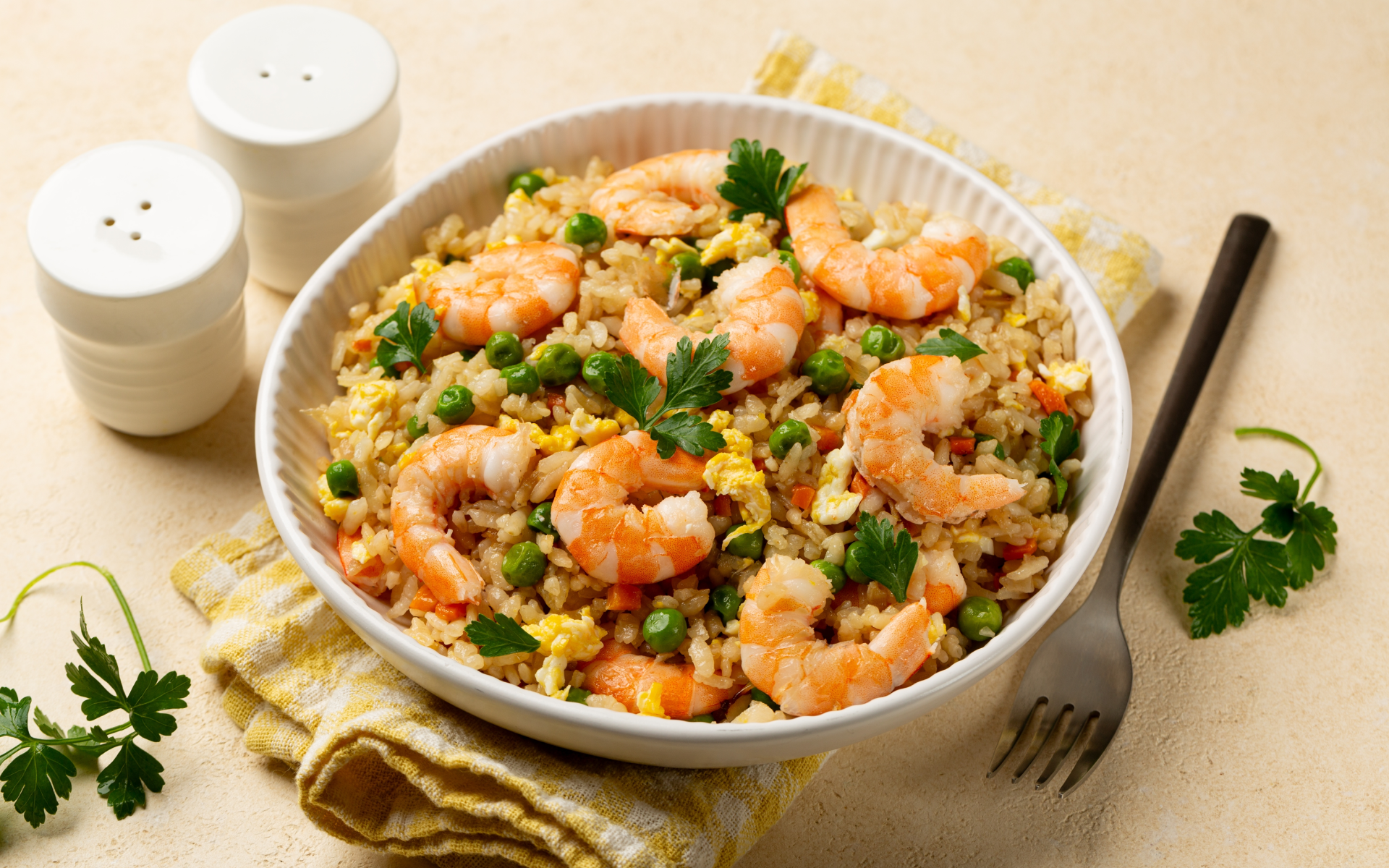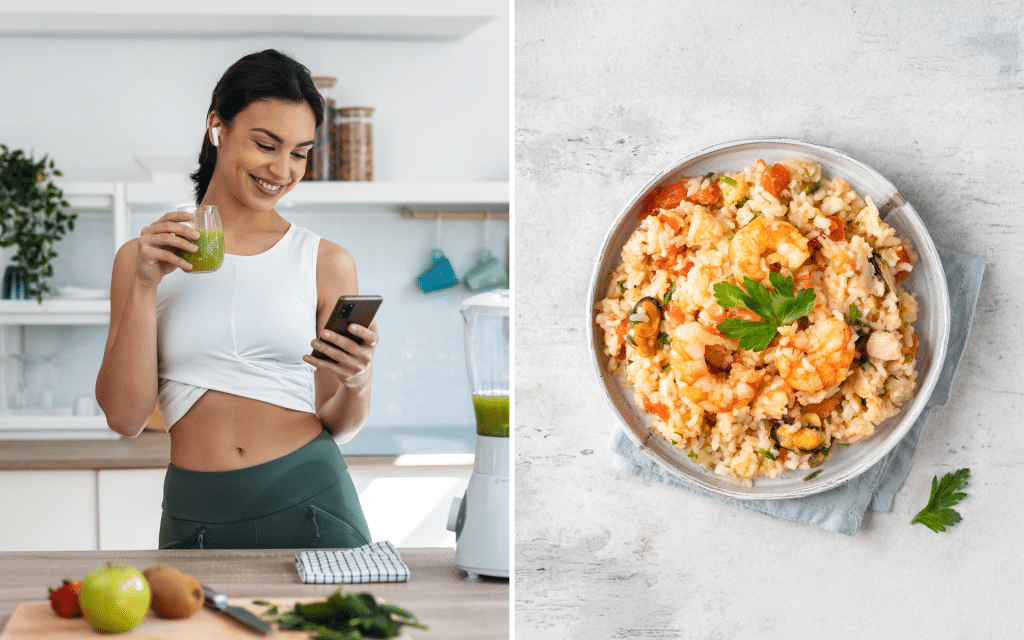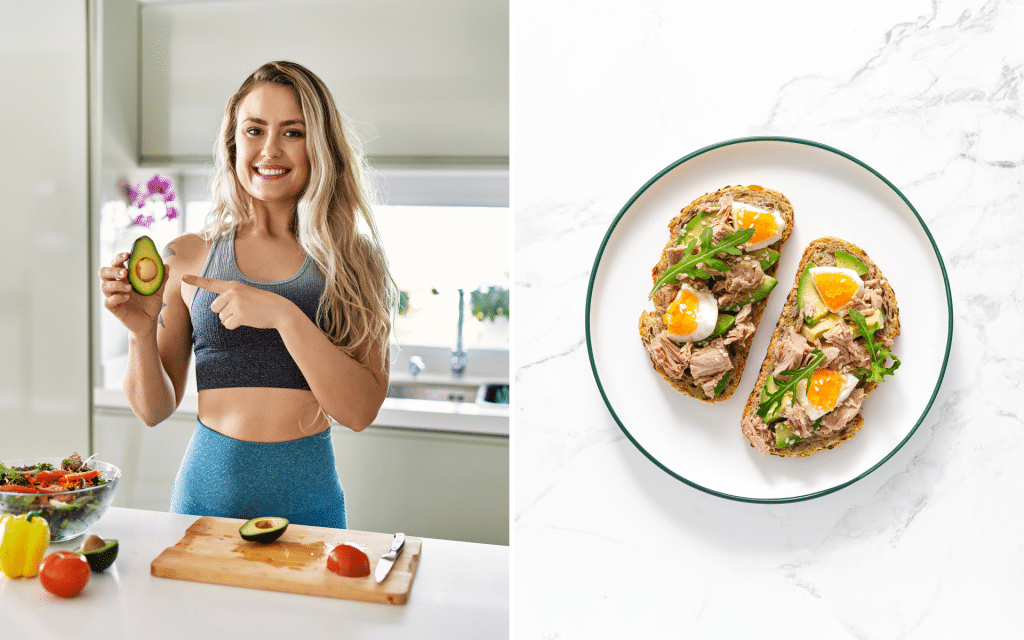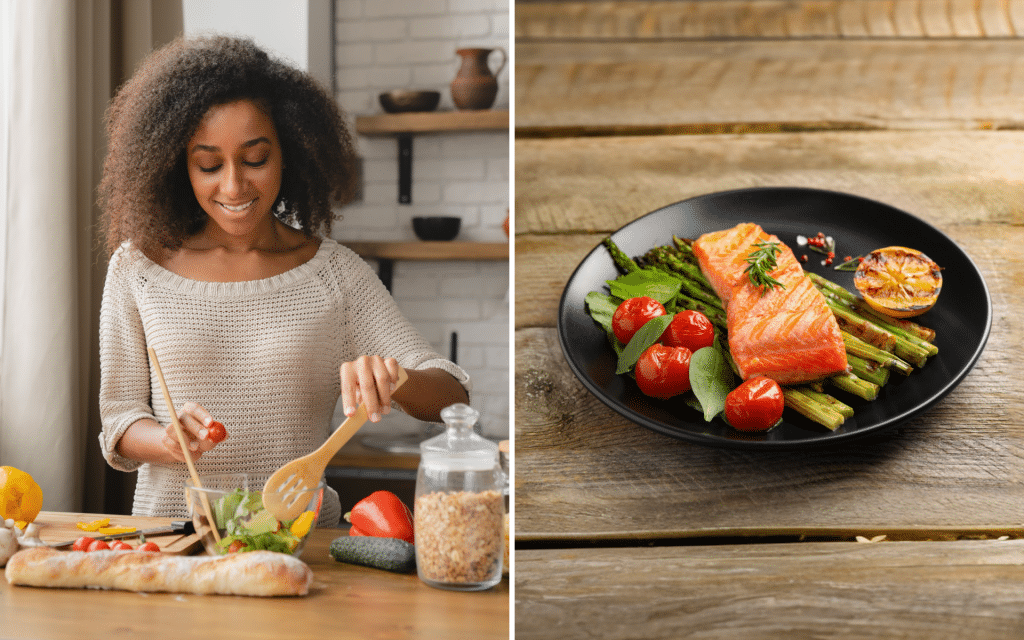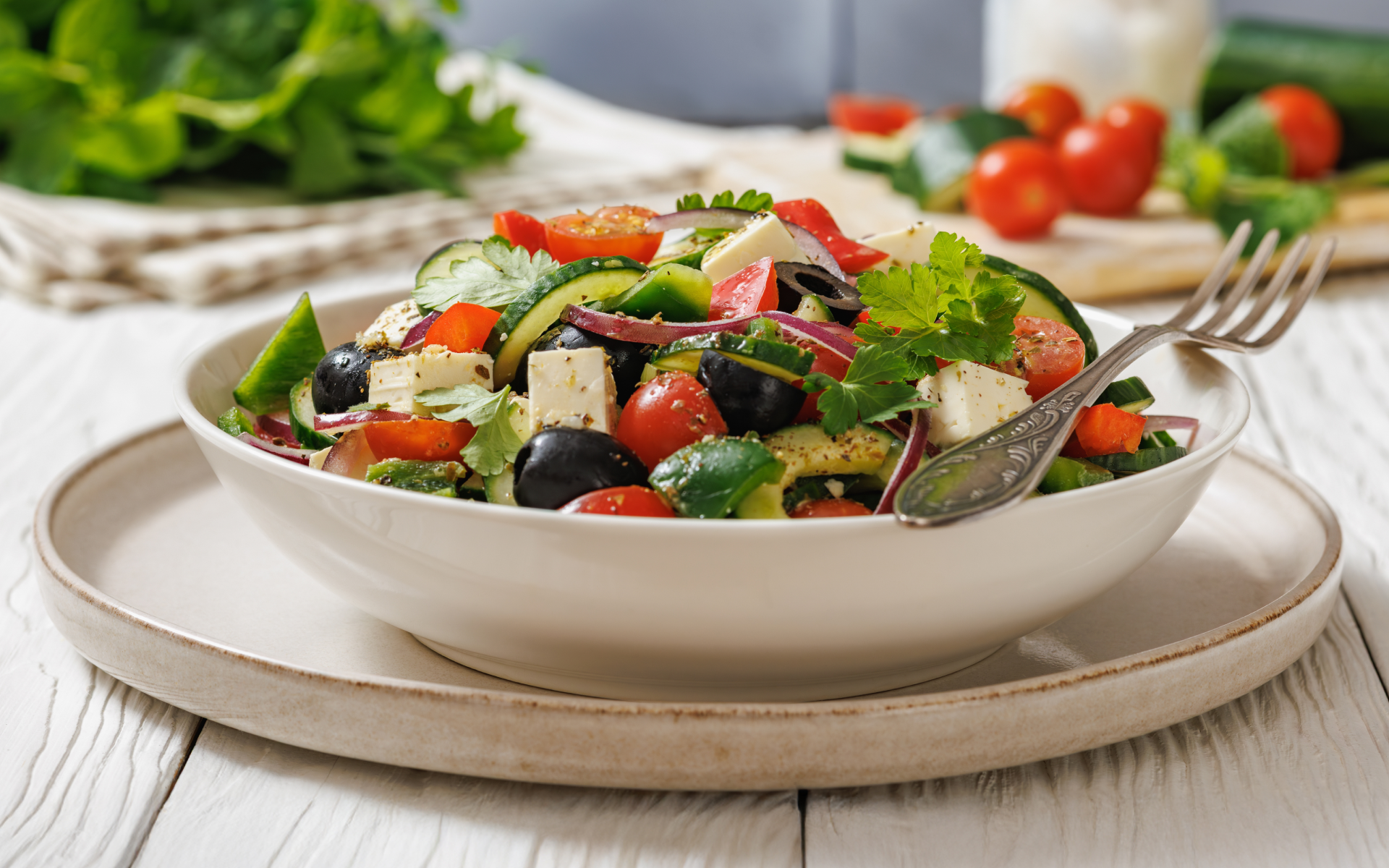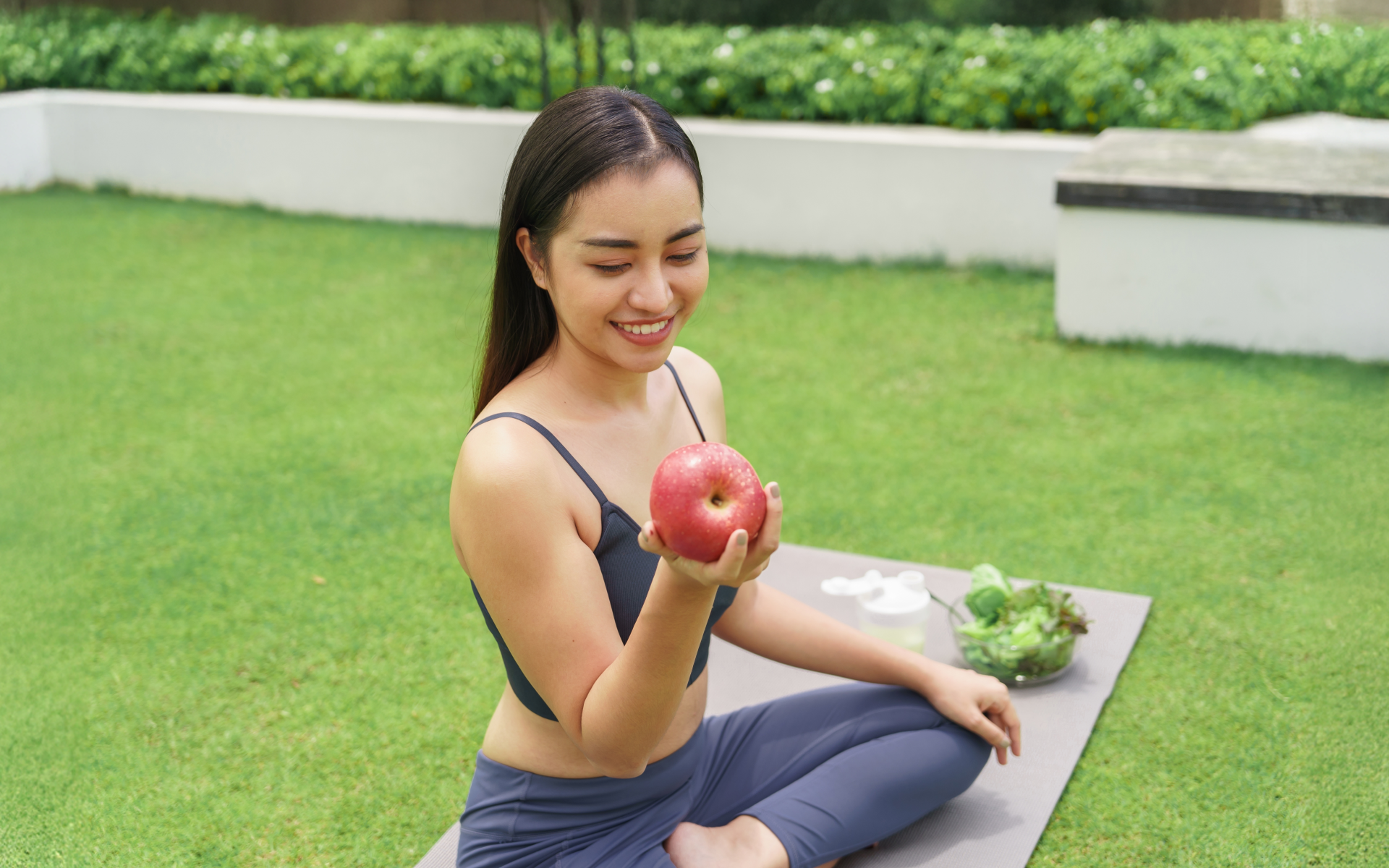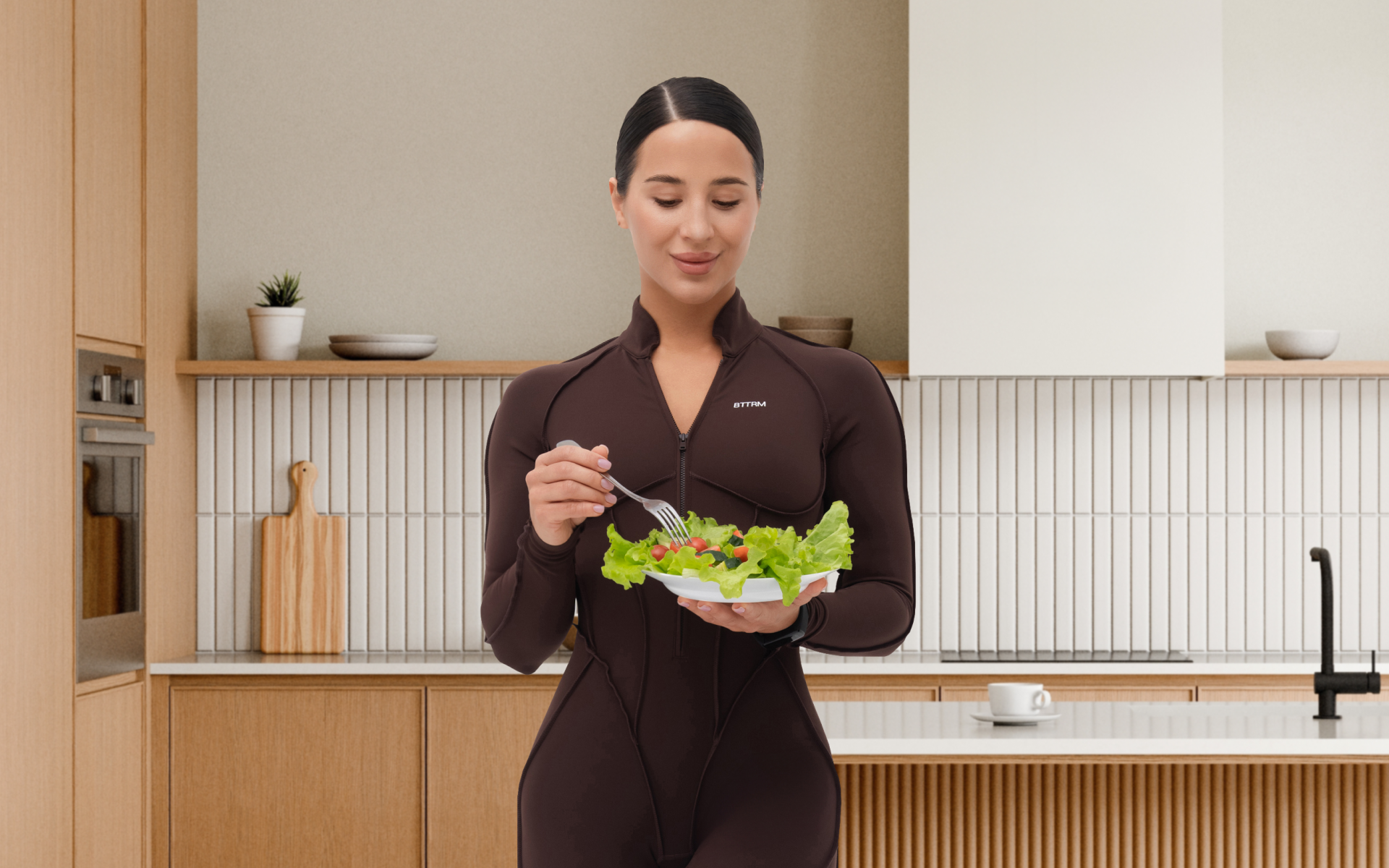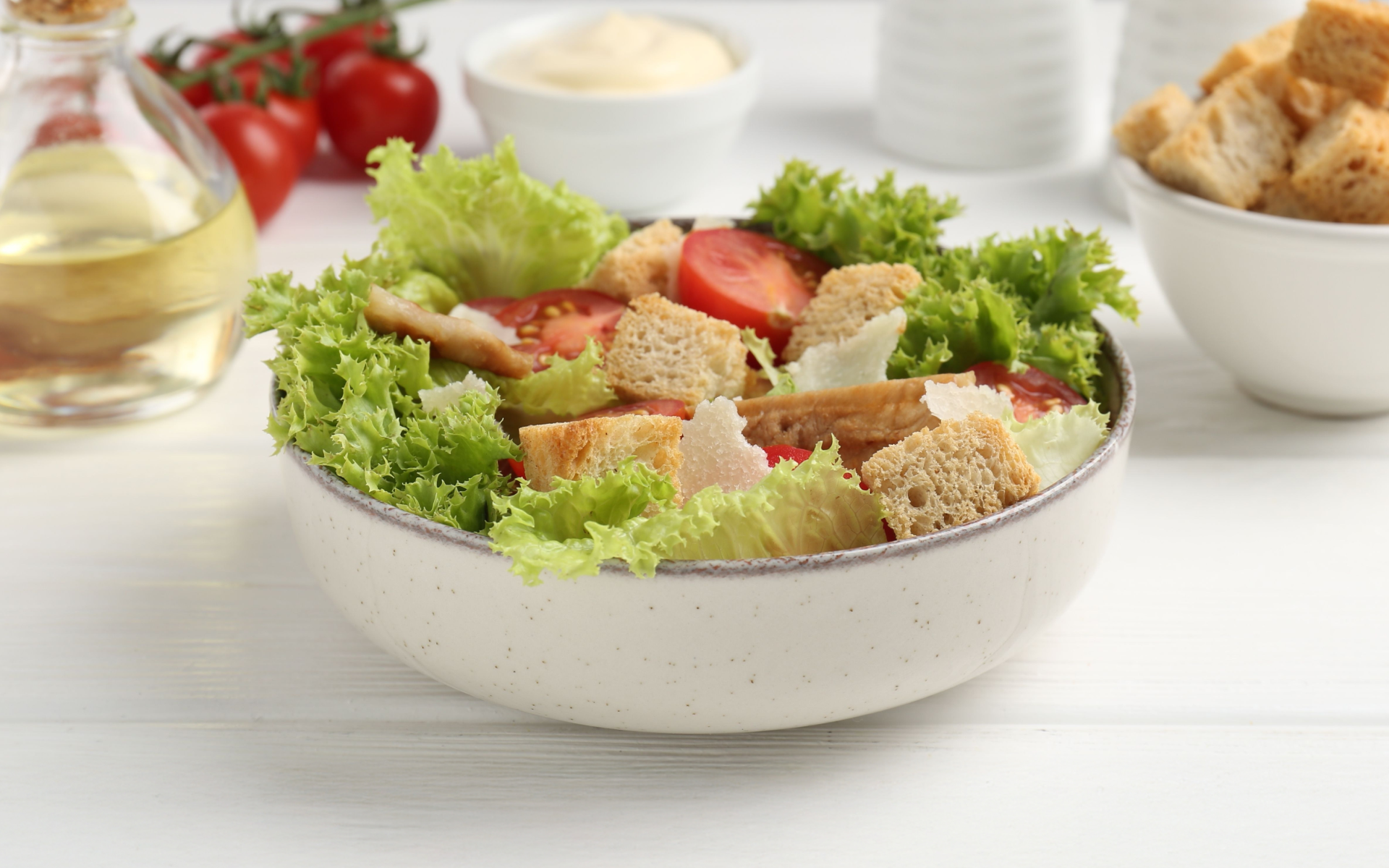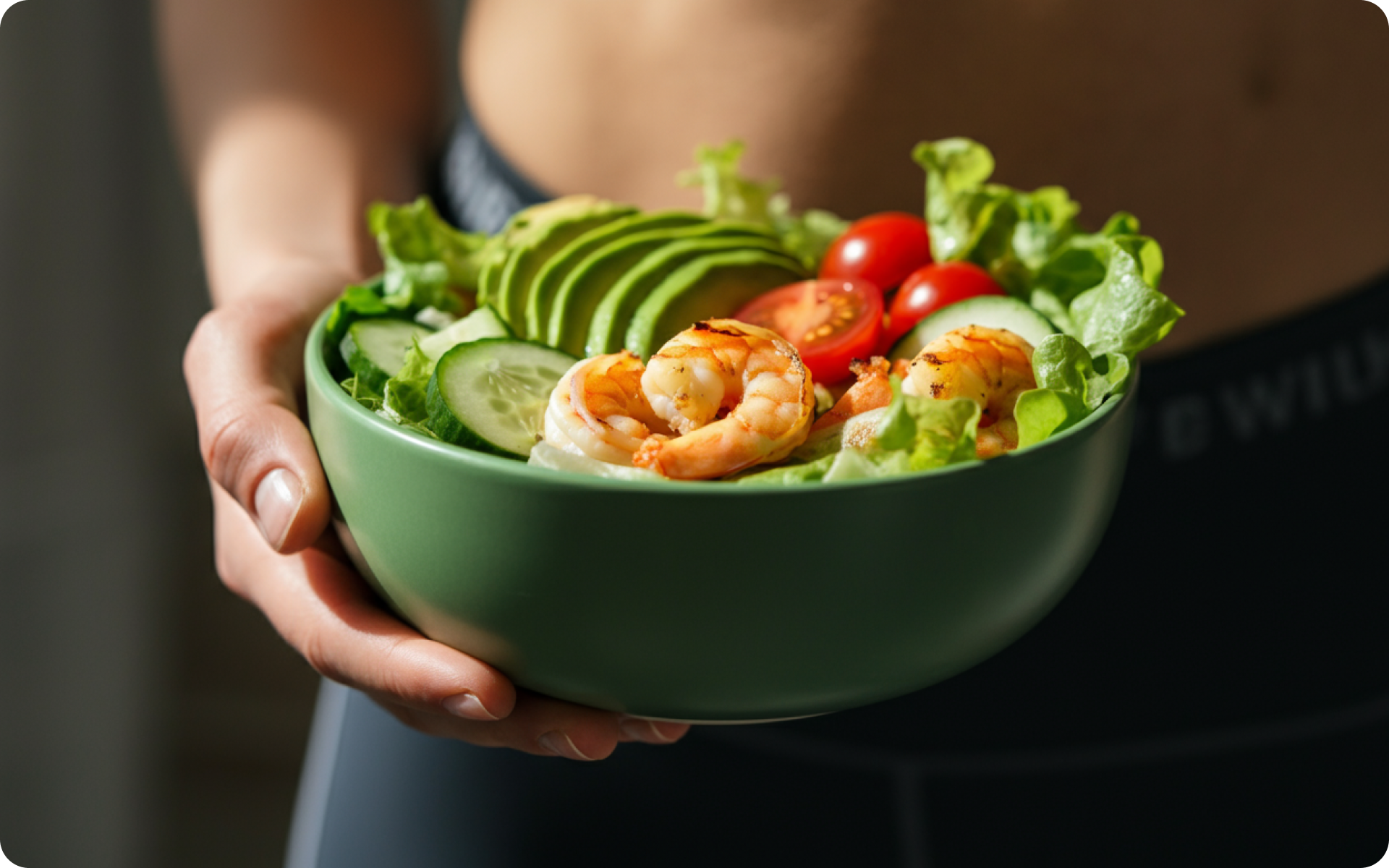You could become a pescatarian if you want to replace or avoid red meat or land animal proteins.
In this diet, you will only rely on the protein foods:
- Fish
- Seafood
- Plant-based products
In this post, you will learn about some of the high protein pescatarian meals to try.
When planning high protein pescatarian meals, it’s a good idea to familiarize yourself with your food options so you can mix and match.
There is a wide variety of breakfast, lunch, or dinner foods. Pescatarian meals contain nutrients essential for overall health and well-being.
Examples of pescatarian meal recipes:
- Sardines on crostini
- One-pan tuna pasta
- Lobster mac and cheese
- Shrimp and snow pea stir-fry
Pescatarian Diet Options and Rules:
- Plant-based: A pescatarian diet includes all plant foods, including whole grains, nuts, seeds, vegetables, fruits, and legumes.
- Seafood and Fish: These are the primary sources of proteins in a pescatarian diet.
Shellfish, tilapia, salmon, and any other type of fish are acceptable in this diet.
You may include seafood options like scallops, lobster, and shrimp.
- Zero Land Animal Meat: The pescatarian diet eliminates meat from land animals, including beef, pork, and chicken.
Seafood and fish are the primary sources of animal proteins in this diet.
- Dairy Products: Though you can include dairy in your pescatarian diet, not everyone does. Some pescatarians avoid it, while others may contain milk, yogurt, cheese, and other dairy products.
- Eggs: An optional protein source. Some pescatarians include eggs in their diet, while others don’t. It’s down to personal preference.
What Are Some High Protein Pescatarian Meals?
There is a wide variety of dishes for high-protein pescatarian meals.
You can choose from fish such as:
- Tuna
- Tilapia
- Salmon
- Mackerel
- Sardines
You should also consider incorporating:
- Legumes
- Nuts and seeds
- Whole grains that contain some proteins.
Some popular pescatarian food combinations include the following:
Salmon with Roasted Vegetables and Quinoa
A serving (about 300g) of salmon with roasted vegetables and quinoa contains about 31g of protein (11).
That is a reasonable amount of protein for a high protein diet.
You can pair it with anything; it works well for lunch, breakfast, or dinner.
If you wish to free yourself from all the extra pounds that have been weighing you down for way too long, start using the BetterMe: Health Coaching app and overhaul your entire life!
Shrimp Scampi and Zucchini Noodles
Shrimp scampi is lean protein, and zucchini is a low-carb alternative to pasta.
Zucchini is also high in vitamin C and fiber and low in calories, fats, and sugar, making it a healthy choice for pescatarians (18).
The shrimp scampi and zucchini dish fits in a high protein pescatarian meals low carb plan.
Salmon and Lentil Salad
This salmon and lentil salad recipe can be a perfect option for lunch or dinner.
Salmon is highly nutritious and rich in various nutrients, including omega-3 fatty acids. The omega-3 keeps blood vessels healthy and reduces inflammation.
The recipe also contains healthy proteins suitable for muscle growth and repair (9).
The salad makes an easy high protein pescatarian meals recipe to prepare in the comfort of your home.
Of course, there are countless high protein pescatarian meals, and we may not discuss them all.
However, recipe options for high protein pescatarian meals can include the following:
- Black bean burgers with avocado and spinach
- Tuna salad sandwich on whole-wheat bread
- Avocado toast with smoked salmon
- Lentil soup with grilled shrimp
- Shrimp scampi with pasta
- Tofu stir-fry with vegetables
- Edamame with brown rice
Read more: Keto Pescatarian Diet: Delicious Low Carb Vegetarian Meals For You
Do Pescatarians Lack Protein?
No, pescatarian meals can contain plenty of protein.
Seafood, such as fish and shellfish, is the diet’s primary source of animal proteins.
Vegetables, fruits, legumes, and grains are also common, most of which contain proteins. Some pescatarians also include dairy and/or eggs, which are additional protein sources.
Do Pescatarians Build Muscle?
Yes, pescatarians can build muscles. Of course, to grow muscles, you need to eat enough proteins and calories and then incorporate resistance training exercises.
Your diet as a pescatarian will include protein-rich foods:
- Fish and seafood
Plant-based proteins like:
- Chickpeas
- Quinoa
- Lentils
- Tofu
Therefore, the pescatarian diet provides all the calories and nutrients you need to develop your muscles.
It is also important to note that proteins help promote muscle growth and repair.
In addition, the omega-3 fatty acids found in fish and seafood may help promote muscle recovery.
How Do Pescatarians Get Their Protein?
Pescatarians get their proteins from fish, seafood, and plant-based foods while avoiding land animal protein.
Some high protein pescatarian foods are:
- Legumes: Chickpeas, edamame, black beans, and lentils, etc.
- Nuts and Seeds: Chia seeds, pumpkin seeds, walnuts, almonds, and hemp seeds
- Whole Grains: All grains have protein. Whole grains with a higher protein content are quinoa and amaranth.
- Soy Products: Soy milk, tempeh, and tofu have many proteins suitable for pescatarians.
- Fish: A substitute for land animal protein. Tuna, salmon, tilapia, and mackerel are common, but the options will vary depending on availability in your area.
- Seafood: Shrimp, scallops, lobster, mussels, oysters, and crab are some protein-rich food options.
Read more: How Much Protein Should I Eat A Day to Build Muscles – A Comprehensive Guide
How To Eat 130g Of Protein A Day As A Pescatarian?
As a pescatarian, you must incorporate high-protein seafood and fish options with high-protein plant-based foods.
Combining options like tuna, cod, salmon, sardines, and shrimp with plant-based protein sources like lentils, quinoa, tofu, and chickpeas is a great way to get the 130g of protein you need.
Check the nutrition labels and protein content to ensure you eat the correct quantity.
11 Best Foods To Eat More Protein As A Pescatarian
As a pescatarian, many foods are protein-rich to supplement your diet.
Include these foods in your top 5 best meals to eat more protein as a pescatarian.
Build weekly meals after you decide which foods on the pescatarian diet sound the best.
Add your favorite foods to your grocery list and create different combinations to have your top meal choices ready.
- Salmon
Salmon is nutrient-rich and good for overall health.
Salmon contains B vitamins (B12, B3, B2) crucial in brain function, energy production, and DNA repair.
It also contains vitamin D and omega-3 fatty acids.
Salmon’s omega-3 fatty acids keep blood vessels healthy and reduce inflammation (9). It is also important to note that salmon is rich in proteins.
A 100g serving of salmon contains about 20g of proteins, among other nutrients (5).
- Shrimp
Shrimp is a healthy, protein-rich seafood with various nutrients.
100g of shrimp contains about 24g of proteins (2).
It is also rich in vitamins and minerals, such as selenium, vitamin B12, calcium, and phosphorus, which are beneficial for the body.
- Tuna
If you are looking for a highly nutritious fish, tuna is one option.
Tuna contains nutrients such as:
- Lipids
- Fat-soluble vitamins
- High-quality proteins
It also has many nutritional and health benefits, including protection against cardiovascular, metabolic, and neurological diseases.
Eating tuna may also help regulate body weight (6).
- Cod
Cod is a popular fish with flaky, white flesh. It has a mild flavor and is highly nutritious.
Cod is low in fat but rich in various nutrients, including:
- Proteins
- Selenium
- Potassium
- Phosphorus
- Vitamins B12 and B6
Its nutritional value can reduce the risk of diabetes and heart disease, among other benefits (17).
- Mackerel
There are various ways to cook mackerel. You can pan-fry or grill, among other ways.
It is a fatty fish rich in omega-3 fatty acids, vitamins D and B vitamins (B12, B6, B3, and B2).
Eating mackerel may lower the risk of:
- Heart disease
- Improve eyesight
- Reduce inflammation
- Promote a healthy immune system (4).
The BetterMe: Health Coaching app will provide you with a host of fat-frying fitness routines that’ll scare the extra pounds away and turn your body into a masterpiece! Get your life moving in the right direction with BetterMe!
- Greek Yogurt
All yogurt provides protein, calcium, and probiotic benefits, but Greek yogurt stands out for its extra protein.
Protein helps muscle growth and repair and makes you feel full, which can help with weight loss.
The other nutrients in yogurt help promote the following:
- Immunity
- Intestinal health
- Strengten bones (12).
- Quinoa
Quinoa is a healthy choice because of its various nutrients.
It contains all nine essential amino acids, making it a complete protein.
Quinoa is gluten-free and rich in antioxidants, vitamins, and various minerals.
This food can benefit your health and wellness because it contains a lot of nutrients and bioactive compounds, which can reduce the risk of:
- Cardiovascular diseases
- Hypertension
- Diabetes
- Obesity
- Etc (8).
- Tofu
Like quinoa, tofu contains all the essential amino acids and is a good source of healthy proteins.
Tofu comes from dried soybeans, soaked, crushed, and boiled.
This nutrient-rich protein includes:
- Manganese
- Calcium
- Vitamins
- Proteins
- Iron
Eating tofu supports bone health and manages blood sugar levels. It is low in calories, which can help with weight loss (15).
- Lentils and Chickpeas
Lentils and chickpeas are protein and fiber foods. These are plant-based foods, rich in many nutrients.
Legumes and chickpeas contain nutrients such as:
- Magnesium
- Potassium
- B vitamins
- Zinc
- Iron
These healthy carbs contain fiber and promote satiety – the feeling of fullness.
That makes them also helpful for weight loss.
Additionally, lentils and chickpeas do not contain cholesterol and have very low sodium or fat content, making them a good addition to a health and wellness diet (10).
- Edamame
Edamame is nutrient-rich with healthy plant proteins.
You can incorporate these green foods into any meal as a side dish or use them to make edamame soup.
Edamame contains healthy proteins, minerals, and fiber, which benefit heart and gut health and weight loss.
In addition, edamame contains isoflavones and soy peptides that may reduce inflammation. Due to its calcium and fiber content, it may also promote bone health and help regulate blood sugar (7).
- Nuts and Seeds
Numerous health benefits come with eating nuts and seeds.
You can enjoy them as snacks on the go or alongside other meals, fruits, or vegetables.
Nuts and seeds are a good source of healthy fats and proteins, fiber, minerals, and vitamins essential for the body.
Eating nuts and seeds has several benefits, such as the following:
- Weight regulation
- Boosting immunity
- Skin and brain health
- Reducing the risk of heart disease (13).
Some nutritious nuts and seeds include almonds, cashews, chestnuts, pecans, Brazilian nuts, walnuts, hemp seeds, chia seeds, sesame seeds, sunflower seeds, and pumpkin seeds.
Some other meals to eat more protein as a pescatarian include scallops, mussels, trout, and sardines.
Not automatically, but people who stick to pescatarian diets can be skinnier. People who follow plant-based diets tend to weigh less on average, probably because many plant-based foods are lower in calories than animal-based foods. The pescatarian diet is primarily plant-based, with some seafood and fish. It is nutrient-dense and can be low in calories, which makes it suitable for weight loss. People who eat a well-balanced pescatarian diet can lose some weight and, hence, become skinnier. Vitamin B12 is a necessary nutrient in your diet as it helps keep your nerve cells and blood healthy. It also helps in DNA synthesis, skin health, and energy conversion, among other benefits (16). People on entirely plant-based diets sometimes need to supplement vitamin B12 because it is scarce in plant-based foods. Most pescatarians, however, can usually get enough vitamin B12 from fish and seafood as long as they don’t have a medical condition, making it more difficult to absorb vitamin B12 from food. Talk to your healthcare provider if you have individual concerns. Most people eat fish and other seafood a few times per week. You should consume higher mercury fish less often. Here is a table that shows how often pescatarians can eat fish (1): Refer to your local health authorities’ fish consumption guidelines for more information. Pescatarians can incorporate many other options into their diets besides fish. For example, without eating fish, they can eat plant-based protein foods such as legumes, tofu, nuts, and seeds. Yes, being a pescatarian can be good for the skin. Researchers have found the nutrients in pescatarian diets, such as omega-3 fatty acids, can be good for the skin. They may help keep the skin hydrated and reduce inflammation, which could help treat acne, atopic dermatitis, psoriasis, and skin ulcers (14). Additionally, a diet containing nutrient-dense plant-based foods benefits your skin.Frequently Asked Questions
Are pescatarians skinnier?
Should pescatarians take B12?
Can pescatarians eat fish everyday?
Consumer Group
Recommended Consumption/Week
General
At least 8 oz per week
Pregnant or Breastfeeding
8–12 oz per week (2–3 servings from Best Choices that are lower in mercury
Children (1-11 years)
2 servings per week (1–4 oz per serving, depending on age)
Is being a pescatarian good for skin?
The Bottom Line
If you are looking for a healthy and nutritious meal plan to help you lose weight, consider a pescatarian diet. This diet avoids proteins from land animals but incorporates fish and seafood into a primarily plant-based diet.
The pescatarian diet has many health and nutritional benefits and aids heart and brain health. Being well-balanced may reduce the risk of cardiovascular diseases, lower blood pressure, and reduce inflammation. It also promotes gut and brain health (3).
Therefore, you can try a high protein pescatarian diet to live a healthy lifestyle or lose weight.
DISCLAIMER:
This article is intended for general informational purposes only and does not serve to address individual circumstances. It is not a substitute for professional advice or help and should not be relied on for making any kind of decision-making. Any action taken as a direct or indirect result of the information in this article is entirely at your own risk and is your sole responsibility.
BetterMe, its content staff, and its medical advisors accept no responsibility for inaccuracies, errors, misstatements, inconsistencies, or omissions and specifically disclaim any liability, loss or risk, personal, professional or otherwise, which may be incurred as a consequence, directly or indirectly, of the use and/or application of any content.
You should always seek the advice of your physician or other qualified health provider with any questions you may have regarding a medical condition or your specific situation. Never disregard professional medical advice or delay seeking it because of BetterMe content. If you suspect or think you may have a medical emergency, call your doctor.
SOURCES:
- Advice About Eating Fish (2021, fda.gov)
- Crustaceans, shrimp, cooked (2019, fdc.nal.usda.gov).
- Exploring the Benefits of Pescatarianism (2023, sydney.edu.au).
- Fall in love with mackerel this summer (2022, ion.ac.uk).
- Fish, salmon, Atlantic, farmed, raw (2019, fdc.nal.usda.gov).
- Health benefits of bluefin tuna consumption: (Thunnus thynnus) as a case study (2024, pmc.ncbi.nlm.nih.gov).
- Health Benefits of Edamame (2024, webmd.com).
- Nutritional and Functional New Perspectives and Potential Health Benefits of Quinoa and Chia Seeds (2023, nlm.nih.gov).
- Omega-3 Fatty Acids (2024, ncbi.nlm.nih.gov).
- Pulses: The Perfect Food, Healthy to Eat, Healthy to Grow; Peas-Lentils-Chickpeas (2022, ndsu.edu).
- Salmon with Quinoa & Roast Veggies (n.d., mynetdiary.com).
- The Benefits of Eating Greek Yogurt (2022, utmedicalcenter.org).
- The Health Benefits of Regularly Eating Nuts and Seeds (2024, eufic.org).
- The Potential Uses of Omega-3 Fatty Acids in Dermatology: A Review (2020, pubmed.ncbi.nlm.nih.gov).
- Tofu: Making a place for this nutritious, plant-based food in your diet (2024, health.harvard.edu).
- Vitamin B12 (2023, ods.od.nih.gov).
- What to know about cod (2019, medicalnewstoday.com).
- Zucchini noodles are a nutritious pasta alternative (2023, extension.illinois.edu).
